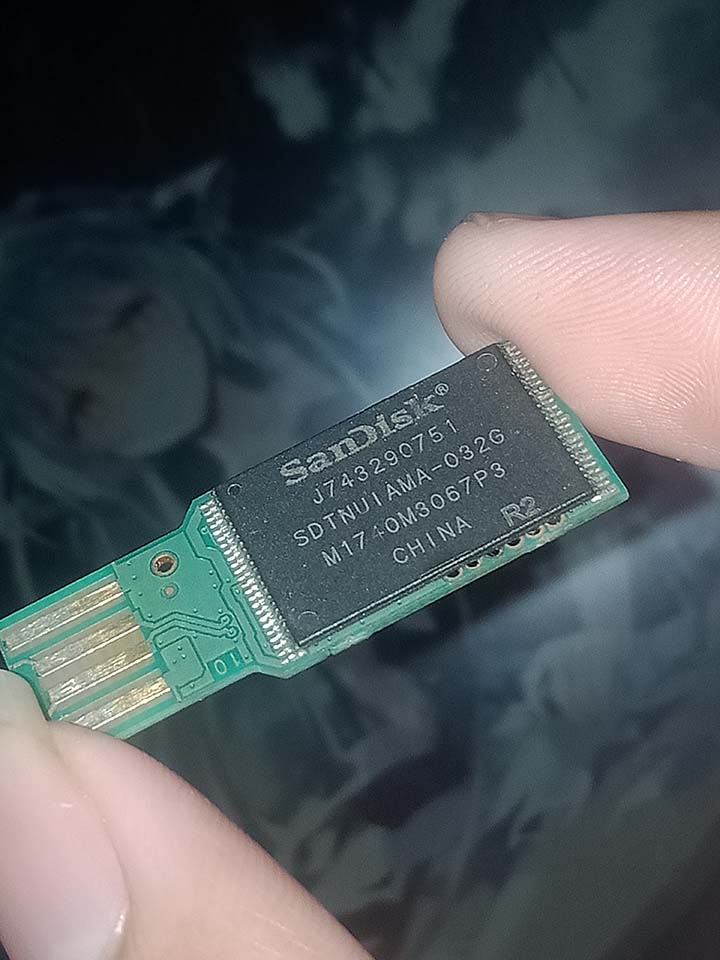Comparing: SanDisk Cruzer Blade 16GB vs AMD Radeon HD 7310 IGPU VRAM Disk
In this comparison, we analyze two Disks: SanDisk Cruzer Blade 16GB and AMD Radeon HD 7310 IGPU VRAM Disk, using synthetic benchmark tests to evaluate their overall performance. This side-by-side comparison helps users understand which hardware delivers better value, speed, and efficiency based on standardized testing. Whether you're building a new system or upgrading an existing one, this benchmark-driven evaluation offers valuable insights to guide your decision.

SanDisk Cruzer Blade 16GB
| Type: | Disks |
|---|---|
| Model: | Cruzer Blade 16GB |
| Capacity: | 16GB |
| Interface: | USB 2.0 |

AMD Radeon HD 7310 IGPU VRAM Disk
| Type: | Disks |
|---|---|
| Model: | Radeon HD 7310 IGPU VRAM Disk |
| Capacity: | 128MB |
| Interface: | DDR3 |
Specification Comparison Table
This specification comparison presents technical details of several devices or components to help you understand the key differences between each option. Use this table as a reference to determine which device best suits your needs.
| Specification | SanDisk Cruzer Blade 16GB | AMD Radeon HD 7310 IGPU VRAM Disk |
|---|---|---|
| Brand | SanDisk | - |
| Format | USB FlashDrive | VRAM Disk |
| Capacity | 16GB | 128MB |
| Interface | USB 2.0 | DDR3 |
Submission Comparison Table
This submission comparison table displays the number and details of benchmark data submissions from various devices or components. This information helps you understand the performance based on the benchmarks that have been tested, as well as providing an overview of the consistency and popularity of the available benchmark results.
| No. | Benchmark Software | SanDisk Cruzer Blade 16GB | AMD Radeon HD 7310 IGPU VRAM Disk |
|---|---|---|---|
| 1 | ATTO Disk Benchmark - 64M |
Read: 21.46 MB/s Write: 9.10 MB/s |
Read: 966.34 MB/s Write: 378.12 MB/s |
| 2 | CrystalDiskMark |
Read: 24.94 MB/s Write: 16.33 MB/s |
Read: 393.23 MB/s Write: 393.66 MB/s |
Submission Comparison Chart
This chart visualizes the benchmark scores comparison between two hardware devices based on submitted data.
Media Gallery
A collection of photos of tested hardware. These images can help you identify the physical form, model, and variant of the hardware in question. These photos are from our own documentation, and if they are not available we may not be able to document them.
About Hardware SanDisk Cruzer Blade 16GB
The SanDisk Cruzer Blade 16GB is a smaller capacity variant of the Cruzer Blade series that relies on a USB 2.0 interface. This flash drive is suitable for storing document files, installers, or as temporary backup media at a relatively affordable price. Its compact and lightweight design makes it easy to carry around, although the data transfer speed is lower than USB 3.0-based flash drives.
The test was conducted using a Lenovo IdeaPad Slim 3i 14ITL6 device, with 12GB DDR4 RAM (dual channel), Windows 11 22H2 operating system, and connection via USB 3.1 Gen 1 port. Based on benchmark results using CrystalDiskMark, the drive recorded read speeds of 24.94 MB/s and write speeds of 16.33 MB/s. While in the Cross Platform Disk Test, the read speed reached 26.98 MB/s and write 4.21 MB/s. Despite its limited performance, its capacity and portability are still quite useful for basic needs.
Device Test:
Device: Lenovo IdeaPad Slim 3i 14ITL6
RAM: 12GB DDR4 3200MHz Dual Channel (8+4)
OS: Windows 11 22H2
USB: USB 3.1 Gen 1
Wednesday, 05 April 2023 17:18:31 | Update: 1 month ago
About Hardware AMD Radeon HD 7310 IGPU VRAM Disk
The AMD Radeon HD 7310 is an integrated GPU (iGPU) based on the Terascale 2 architecture embedded in some early generation E1 series APUs, such as the AMD E1-1200. With 80 Stream Processors, this GPU is designed for light tasks such as video playback, basic computing, and casual gaming with low graphics settings. Despite being an entry-level GPU and being quite old, the Radeon HD 7310 is still able to operate well for basic needs and certain technical experiments.
In this test using an HP 1000 1b05au device paired with an AMD E1-1200 processor, 4GB DDR3 RAM, and Windows 7 operating system, an interesting experiment was conducted by converting part of the VRAM allocation into a VRAMDisk using specialized GPU RAM Drive software.
VRAMDisk is a method that utilizes VRAM capacity as high-speed temporary storage, just like RAMDisk but with graphics memory. In this configuration, of the total VRAM of 384MB (plus shared memory), about 128MB was set aside to be used as a VRAMDisk. Despite the small capacity, the read and write speeds were quite surprising:
- CrystalDiskMark:
- Read: 393.23 MB/s
- Write: 393.66 MB/s
This figure shows that even using an older generation GPU with DDR3 memory and a 128-bit interface, the VRAM still has enough bandwidth for light cache tasks or fast storage experiments. This technology is not intended for daily use, but it can be an interesting alternative for technical purposes, testing, or short-term local access speeds of small files.
Given its limitations-both in terms of VRAM capacity, iGPU performance, and modern driver support-the AMD Radeon HD 7310 is definitely not an option for gaming or heavy workloads right now. However, experiments like this VRAMDisk show that legacy devices can still be creatively utilized in certain contexts, especially in resource-constrained environments.
Device test (testbed) :
Device: HP 1000 1b05au
Software: GPU Ram Drive
CPU: AMD E1-1200
GPU: AMD Radeon HD 7310 (Integrated)
RAM: 4GB DDR3 Single Channel 2 DIMM 1066MHz
OS: Windows 7
Wednesday, 26 December 2012 14:27:32 | Update: 1 month ago


